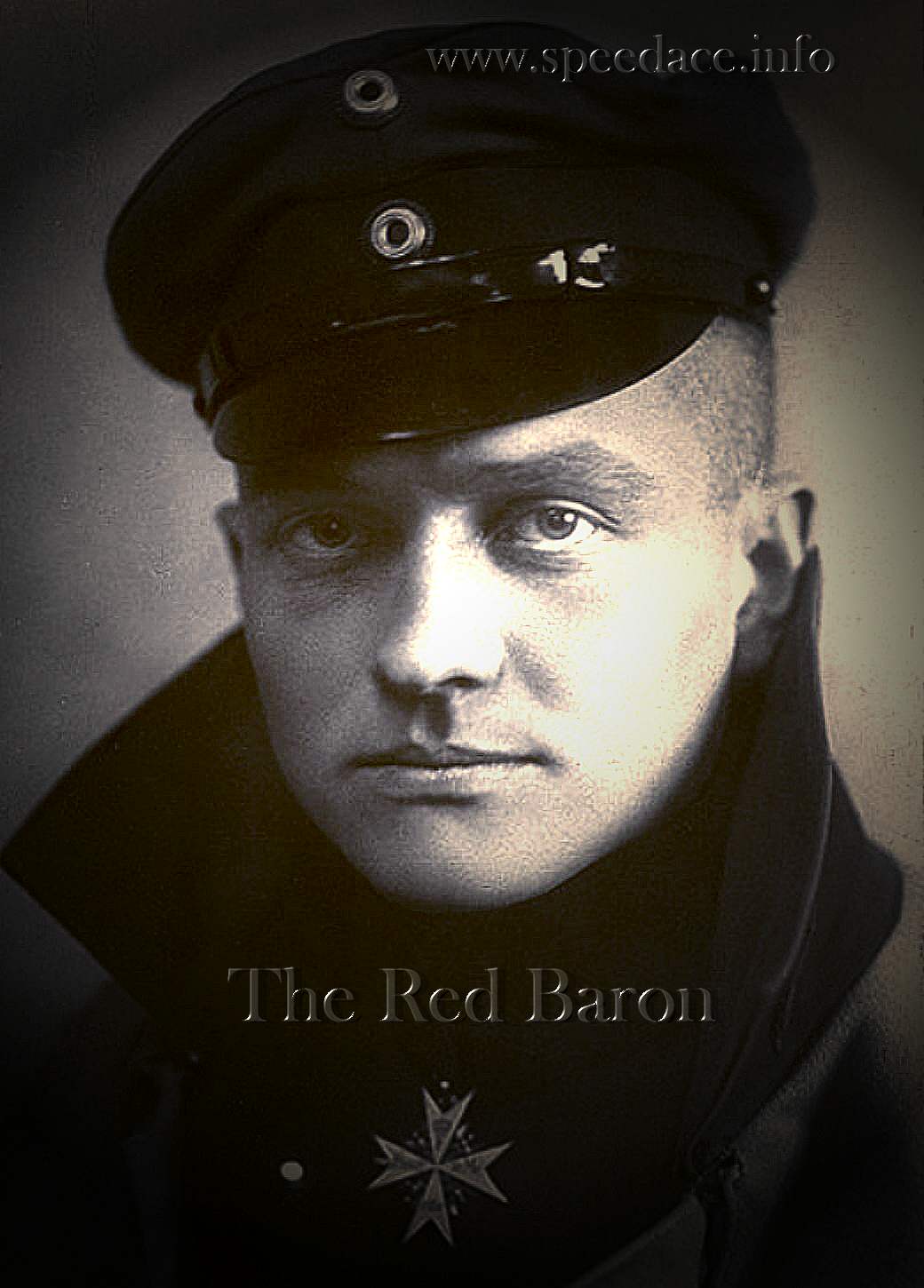|
The most successful fighter pilots who took part in aerial battles during
the First World War
were called flying aces. The term first appeared in 1915 when French
newspapers described Adolphe Pegoud as a flying ace after he became the
first pilot to shoot down five German aircraft.
In
1916 during the Battle
of Verdun the French fighter units began publishing the scores of
individual pilots. German Air Service followed the example of France but
their pilots were only listed when they had achieved eight confirmed
'kills'. In 1916 Oswald
Boelcke and Max
Immelmann were Germany's two most successful flying aces. Both these
men benefited from the introduction of the synchronized
gear which made it easier for pilots to hit their targets.
The
Royal Flying
Corps also began publishing figures in 1916. It was also decided that
British pilots who achieved eight victories would be awarded the Distinguished
Flying Cross. Pilots who won this award included Major
Mick Mannock (73 victories), William
Bishop (72), Raymond
Collishaw (68) and James
McCudden (58).
France's
most successful pilots included Rene
Fonck (75), Georges
Guynemer (53) and Charles
Nungesser (43). However, it was the German pilot, Manfred
von Richthofen, the 'Red Baron', with eighty victories, who achieved
the highest figure during the First World War. The publication of
these figures helped to build up morale during the war. They were also
used to persuade young men to join the armed forces and to encourage
experienced pilots to compete with their comrades.
The
figures published in the newspapers were not always accurate. Dogfights
often involved large numbers of aircraft and it was not always clear who
was really responsible for the actual 'kill'. To obtain a 'confirmed'
victory involved the inspection of the wreckage, and this was of course
impossible when the aircraft had come down behind the enemy front-line.
Manfred Albrecht Freiherr von Richthofen (2 May 1892 – 21 April 1918), also widely known as the Red Baron, was a German fighter pilot with the Imperial German Army Air Service (Luftstreitkräfte) during World War I. He is considered the top ace of that war, being officially credited with 80 air combat victories.
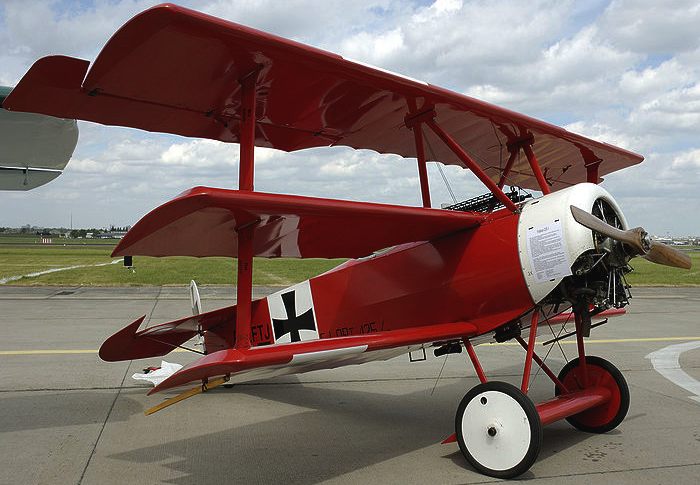
By 1918, he was regarded as a national hero in Germany, and was very well known by the other side.
Manfred
von Richthofen was born in Schweidnitz, Germany.
Richthofen was shot down and killed near Amiens on 21 April 1918. There has been considerable discussion and debate regarding aspects of his career, especially the circumstances of his death. He remains perhaps the most widely known fighter pilot of all time, and has been the subject of many books, films and other media.
He was originally a cavalry
officer in the German
Army, but transferred to the German
Army Air Service in May 1915. Initially an observer on reconnaissance
flights over the Eastern
Front, he became a fighter pilot on the Western
Front in August 1916. He served under Oswald
Boelcke and quickly became his star pupil.
By January 1917, Richthofen had shot down fifteen aircraft had been
appointed commander of his own unit. He painted the fuselage of his Albatros
D-III a bright red and was nicknamed the Red Baron. After the death of Oswald
Boelcke and Max Immelmann, Richthofen became the most famous war
ace in Germany. Richthofen was also well-known in Britain and became a
hate-figure after Allied
propaganda portrayed him as a man who enjoyed killing.
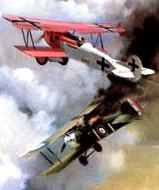
First
World War dogfight
In June 1917, Richthofen was appointed commander of the German
Flying Circus. Made up of Germany's top fighter pilots, this new unit
was highly mobile and could be quickly sent to any part of the Western
Front where it was most needed. Richthofen and his pilots achieved
immediate success during the air war over Ypres
during August and September. He also held strong opinions on aircraft
design and was involved with Anton
Fokker in the production of the Fokker
D-VII.
Manfred von Richthofen was killed when he was was brought down by ground
fire on 21st April 1918. Richthofen had been responsible for shooting down
80 allied aircraft, the highest score of any fighter pilot during the First
World War.
NICKNAME
- THE RED BARON
Richthofen was a Freiherr (literally "Free Lord"), a title of nobility often translated as Baron. This is not a given name nor strictly a hereditary title—since all male members of the family were entitled to it, even during the lifetime of their
father. This title, combined with the fact that he had his aircraft painted red, led to Richthofen being called "The Red Baron" "der Rote Baron" both inside and outside Germany. During his lifetime, however, he was more often described in German as Der Rote Kampfflieger (variously translated as The Red Battle Flyer or The Red Fighter Pilot). This name was used as the title of Richthofen's 1917 autobiography.
Richthofen's other nicknames include "Le Diable Rouge" ("Red Devil") or "Le petit Rouge" ("Little Red") in French, and the "Red Knight" in
English.

EARLY LIFE
Von Richthofen coat of arms.Von Richthofen was born in Kleinburg, near Breslau, Lower Silesia (now part of the city of Wrocław, Poland), into a prominent Prussian aristocratic family. His father was Major Albrecht Phillip Karl Julius Freiherr von Richthofen and his mother was Kunigunde von Schickfuss und Neudorff. He had an elder sister (Ilse) and two younger brothers.
When he was four years old, Manfred moved with his family to nearby Schweidnitz (now Świdnica). He enjoyed riding horses and hunting as well as gymnastics at school. He excelled at parallel bars and won a number of awards at school. He and his brothers, Lothar and Bolko, hunted wild boar, elk, birds, and deer.
After being educated at home he attended a school at Schweidnitz, before beginning military training when he was 11. After completing cadet training in 1911, he joined an Uhlan cavalry unit, the Ulanen-Regiment Kaiser Alexander der III. von Russland (1. Westpreußisches) Nr. 1 ("1st Uhlan Regiment 'Emperor Alexander III of Russia (1st West Prussia Regiment)' "), and was assigned to the regiment's 3. Eskadron ("Number 3 Squadron").
Manfred
von Richthofen, My First English Victim (17th September, 1915)
We
were all at the butts trying our machine guns. On the previous day we had
received our new aeroplanes and the next morning Boelcke was to fly with
us. We were all beginners. None of us had had a success so far.
Consequently everything that Boelcke told us was to us gospel truth. Every
day, during the last few days, he had, as he said, shot one or two
Englishmen for breakfast.
The next morning, the seventeenth of September, was a gloriously fine day.
It was therefore only to be expected that the English would be very
active. Before we started Boelcke repeated to us his instructions and for
the first time we flew as a squadron commanded by the great man whom we
followed blindly.
We had just arrived at the Front when we recognized a hostile flying
squadron that was proceeding in the direction of Cambrai. Boelcke was of
course the first to see it, for he saw a great deal more than ordinary
mortals. Soon we understood the position and everyone of us strove to
follow Boelcke closely. It was clear to all of us that we should pass our
first examination under the eyes of our beloved leader.
Slowly we approached the hostile squadron. It could not escape us. We had
intercepted it, for we were between the Front and our opponents. If they
wished to go back they had to pass us. We counted the hostile machines.
They were seven in number. We were only five. All the Englishmen flew
large bomb-carrying two-seaters. In a few seconds the dance would begin.
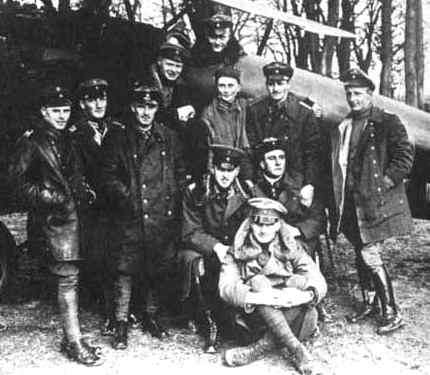
First
World War Air Flying Aces
Boelcke had come very near the first English machine but he did not yet
shoot. I followed. Close to me were my comrades. The Englishman nearest to
me was traveling in a large boat painted with dark colors. I did not
reflect very long but took my aim and shot. He also fired and so did I,
and both of us missed our aim. A struggle began and the great point for me
was to get to the rear of the fellow because I could only shoot forward
with my gun. He was differently placed for his machine gun was movable. It
could fire in all directions.
Apparently he was no beginner, for he knew exactly that his last hour had
arrived at the moment when I got at the back of him. At that time I had
not yet the conviction "He must fall!" which I have now on such
occasions, but on the contrary, I was curious to see whether he would
fall. There is a great difference between the two feelings. When one has
shot down one's first, second or third opponent, then one begins to find
out how the trick is done.
My Englishman twisted and turned, going criss-cross. I did not think for a
moment that the hostile squadron contained other Englishmen who
conceivably might come to the aid of their comrade. I was animated by a
single thought: "The man in front of me must come down, whatever
happens." At last a favorable moment arrived. My opponent had
apparently lost sight of me. Instead of twisting and turning he flew
straight along. In a fraction of a second I was at his back with my
excellent machine. I give a short series of shots with my machine gun. I
had gone so close that I was afraid I might dash into the Englishman.
Suddenly, I nearly yelled with joy for the propeller of the enemy machine
had stopped turning. I had shot his engine to pieces; the enemy was
compelled to land, for it was impossible for him to reach his own lines.
The English machine was curiously swinging to and fro. Probably something
had happened to the pilot. The observer was no longer visible. His machine
gun was apparently deserted. Obviously I had hit the observer and he had
fallen from his seat.
The Englishman landed close to the flying ground of one of our squadrons.
I was so excited that I landed also and my eagerness was so great that I
nearly smashed up my machine. The English flying machine and my own stood
close together. I rushed to the English machine and saw that a lot of
soldiers were running towards my enemy. When I arrived I discovered that
my assumption had been correct. I had shot the engine to pieces and both
the pilot and observer were severely wounded. The observer died at once
and the pilot while being transported to the nearest dressing station. I
honored the fallen enemy by placing a stone on his beautiful grave.
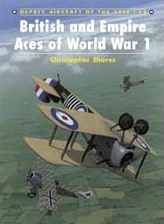
Book
of WW1 Air Aces
Manfred
von Richthofen was with Oswald
Boelcke when he was killed in October, 1916.
One day we were flying, once more guided by Oswald Boelcke against the
enemy. We always had a wonderful feeling of security when he was with us.
After all he was the one and only. The weather was very gusty and there
were many clouds. There were no aeroplanes about except fighting ones.
From a long distance we saw two impertinent Englishmen in the air who
actually seemed to enjoy the terrible weather. We were six and they were
two. If they had been twenty and if Boelcke had given us the signal to
attack we should not have been at all surprised.
The struggle began in the usual way. Boelcke tackled the one and I the
other. I had to let go because one of the German machines got in my way. I
looked around and noticed Boelcke settling his victim about two hundred
yards away from me. It was the usual thing. Boelcke would shoot down his
opponent and I had to look on. Close to Boelcke flew a good friend of his.
It was an interesting struggle. Both men were shooting. It was probable
that the Englishman would fall at any moment. Suddenly I noticed an
unnatural movement of the two German flying machines. Immediately I
thought: Collision. I had not yet seen a collision in the air. I had
imagined that it would look quite different. In reality, what happened was
not a collision. The two machines merely touched one another. However, if
two machines go at the tremendous pace of flying machines, the slightest
contact has the effect of a violent concussion.
Boelcke drew away from his victim and descended in large curves. He did
not seem to be falling, but when I saw him descending below me I noticed
that part of his plane had broken off. I could not see what happened
afterwards, but in the clouds he lost an entire plane. Now his machine was
no longer steerable. It fell accompanied all the time by Boelcke's
faithful friend.
It is a strange thing that everybody who met Boelcke imagined that he
alone was his true friend. I have made the acquaintance of about forty
men, each of whom imagined that he alone was Boelcke's intimate. Each
imagined that he had the monopoly of Boelcke's affections. Men whose names
were unknown to Boelcke believed that he was particularly fond of them.
This is a curious phenomenon which I have never noticed in anyone else.
Boelcke had not a personal enemy. He was equally polite to everybody,
making no differences.
Manfred
von Richthofen, Red Air Fighter (1918)
Those who hear nowadays of the colossal bags made by certain aviators must
feel convinced that it has become easier to shoot down a machine. I can
assure those who hold that opinion that the flying business is becoming
more difficult from month to month and even from week to week. Of course,
with the increasing number of aeroplanes one gains increased opportunities
for shooting down one's enemies, but at the same time, the possibility of
being shot down one's self increases. The armament of our enemies is
steadily improving and their number is increasing. When Max Immelmann shot
down his first victim he had the good fortune to find an opponent who
carried not even a machine gun. Such little innocents one finds nowadays
only at the training ground for beginners.
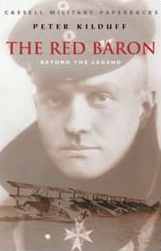
The
Red Baron by Peter Kilduff
In
his book "Red Air Fighter" Manfred von Richthofen
described killing Lanoe
George Hawker.
In view of the character of our fight it was clear to me that I had been
tackling a flying champion. One day I was blithely flying to give chase
when I noticed three Englishmen who also had apparently gone a-hunting. I
noticed that they were watching me and as I felt much inclination to have
a fight I did not want to disappoint them.
I was flying at a lower altitude. Consequently I had to wait until one of
my English friends tried to drop on me. After a short while one of the
three came sailing along and attempted to tackle me in the rear. After
firing five shots he had to stop for I had swerved in a sharp curve.
The Englishman tried to catch me up in the rear while I tried to get
behind him. So we circled round and round like madmen after one another at
an altitude of about 10,000 feet.
First we circled twenty times to the left, and then thirty times to the
right. Each tried to get behind and above the other. Soon I discovered
that I was not meeting a beginner. He had not the slightest intention of
breaking off the fight. He was traveling in a machine which turned
beautifully. However, my own was better at rising than his, and I
succeeded at last in getting above and beyond my English waltzing partner.
When we had got down to about 6,000 feet without having achieved anything
in particular, my opponent ought to have discovered that it was time for
him to take his leave. The wind was favorable to me for it drove us more
and more towards the German position. At last we were above Bapaume, about
half a mile behind the German front. The impertinent fellow was full of
cheek and when we had got down to about 3,000 feet he merrily waved to me
as if he would say, "Well, how do you do?"
The circles which we made around one another were so narrow that their
diameter was probably no more than 250 or 300 feet. I had time to take a
good look at my opponent. I looked down into his carriage and could see
every movement of his head. If he had not had his cap on I would have
noticed what kind of a face he was making.
My Englishmen was a good sportsman, but by and by the thing became a
little too hot for him. He had to decide whether he would land on German
ground or whether he would fly back to the English lines. Of course he
tried the latter, after having endeavored in vain to escape me by loopings
and such like tricks. At that time his first bullets were flying around
me, for hitherto neither of us had been able to do any shooting.
When he had come down to about three hundred feet he tried to escape by
flying in a zig-zag course during which, as is well known, it is difficult
for an observer to shoot. That was my most favorable moment. I followed
him at an altitude of from two hundred and fifty feet to one hundred and
fifty feet, firing all the time. The Englishman could not help falling.
But the jamming of my gun nearly robbed me of my success. My opponent fell, shot through the head, one hundred and fifty feet behind
our line.
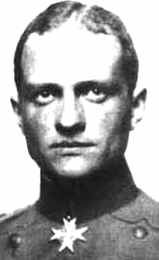
Manfred
Von Richthofen
DEATH OF AN ACE
Richthofen was fatally wounded just after 11:00 am on 21 April 1918, while flying over
Morlancourt Ridge, near the Somme River. 49°56′0.60″N 2°32′43.71″E
/ 49.9335°N 2.545475°E
/ 49.9335; 2.545475
At the time, the Baron had been pursuing (at very low altitude) a Sopwith Camel piloted by a novice Canadian pilot, Lieutenant Wilfrid "Wop" May of No. 209 Squadron, Royal Air Force. In turn, the Baron was spotted and briefly attacked by a Camel piloted by a school friend (and flight commander) of May's, Canadian Captain Arthur "Roy" Brown, who had to dive steeply at very high speed to intervene, and then had to climb steeply to avoid hitting the ground. Richthofen turned to avoid this attack, and then resumed his pursuit of May.
It was almost certainly during this final stage in his pursuit of May that Richthofen was hit by a single .303 bullet, which caused such severe damage to his heart and lungs that it must have produced a very speedy death. In the last seconds of his life, he managed to make a hasty but controlled landing (49°55′56″N 2°32′16″E
/ 49.9321076°N 2.5376701°E
/ 49.9321076; 2.5376701) in a field on a hill near the Bray-Corbie road, just north of the village of Vaux-sur-Somme, in a sector controlled by the Australian Imperial Force (AIF). One witness, Gunner George Ridgway, stated that when he and other Australian soldiers reached the aircraft, Richthofen was still alive but died moments later. Another eye witness, Sergeant Ted Smout of the Australian Medical Corps, reported that Richthofen's last word was "kaputt".
His Fokker Dr.I, 425/17, was not badly damaged by the landing, but it was soon taken apart by souvenir hunters.
No. 3 Squadron, Australian Flying Corps, as the nearest Allied air unit, assumed responsibility for the Baron's remains.
In 2009, Richthofen's death certificate was found in the archives in Ostrów Wielkopolski, Poland. Richthofen had briefly been stationed in Ostrów—which was part of Germany until the end of World War I—before going to war. The document, which is a one-page, handwritten form in a 1918 registry book of deaths, misspells Richthofen's name as "Richthoven" and simply states that he has "died 21 April 1918, from wounds sustained in combat".
CONTROVERSY
Contradictory hypotheses continue to surround the identity of the person who fired the shot that actually killed Richthofen.
The RAF credited Brown with shooting down the Red Baron, but it is now generally agreed that the bullet that hit Richthofen was fired by someone on the ground. Richthofen died following an extremely serious and inevitably fatal chest wound from a single bullet, penetrating from the right armpit and resurfacing next to the left nipple. Brown's attack was from above and the left. Even more conclusively, Richthofen could not have continued his pursuit of May for as long as he did (up to two minutes) had this wound come from Brown's guns. Brown himself never spoke much about what happened that day, claiming, "There is no point in me commenting, as the evidence is already out there".
Many sources, including a 1998 article by Geoffrey Miller, a physician and historian of military medicine, and a 2003 U.S. Public Broadcasting Service documentary, have suggested that Sergeant Cedric Popkin was the person most likely to have killed Richthofen. Popkin was an anti-aircraft (AA) machine gunner with the Australian 24th Machine Gun Company, and was using a Vickers gun. He fired at Richthofen's aircraft on two occasions: first as the Baron was heading straight at his position, and then at long range from the right. Given the nature of Richthofen's wounds, Popkin was in a position to fire the fatal shot, when the pilot passed him for a second time, on the right. Some confusion has been caused by a letter that Popkin wrote, in 1935, to an Australian official historian. It stated Popkin's belief that he had fired the fatal shot as Richthofen flew straight at his position. However, in the latter respect, Popkin was incorrect: the bullet that caused the Baron's death came from the side (see above).
A 2002 Discovery Channel documentary suggests that Gunner W. J. "Snowy" Evans, a Lewis machine gunner with the 53rd Battery, 14th Field Artillery Brigade, Royal Australian Artillery is likely to have killed von Richthofen. However, Miller and the PBS documentary dismiss this theory, because of the angle from which Evans fired at Richthofen.
Other sources have suggested that Gunner Robert Buie (also of the 53rd Battery) may have fired the fatal shot. There is little support for this theory. Nevertheless, in 2007, a municipality in Sydney recognised Buie as the man who shot down Richthofen, placing a plaque near Buie's former home. Buie, who died in 1964, has never been officially recognised in any other way.
The commanding officer of No. 3 Squadron AFC, Major David Blake, initially suggested that Richthofen had been killed by the crew of one of his squadron's R.E.8s, which had also fought members of Richthofen's unit that afternoon. This claim was quickly discounted (if only because of the time factor) and withdrawn. Following an autopsy that he witnessed, Blake became a strong proponent of the view that an AA machine gunner had killed Richthofen.
LINKS
NOVA
"Who Killed the Red Baron?"
English
translation of the account of Bolko v Richthofen's journey to retrieve
Manfred's body
Image
of exact replica of Richthofen's Fokker DR-1
Website
dedicated to Der Rote Kampffleiger aka The Red Baron
Complete
text of The Red Fighter Pilot by Manfred von Richthofen at
The War Times Journal
Combat
record
Footage
of the reburial of The Red Baron in 1925
Historic
footage of Manfred von Richthofen conversing with fellow pilots, circa
1917
CONTACTS
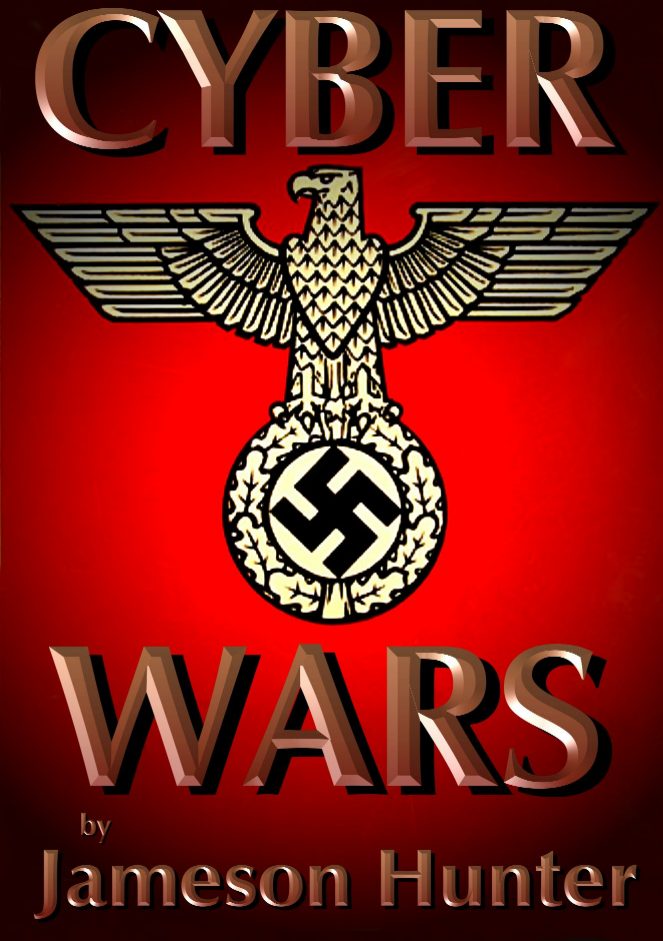
Stirrings
in the Amazon jungle send alarm bells ringing for John Storm and his
intrepid crew.
|
